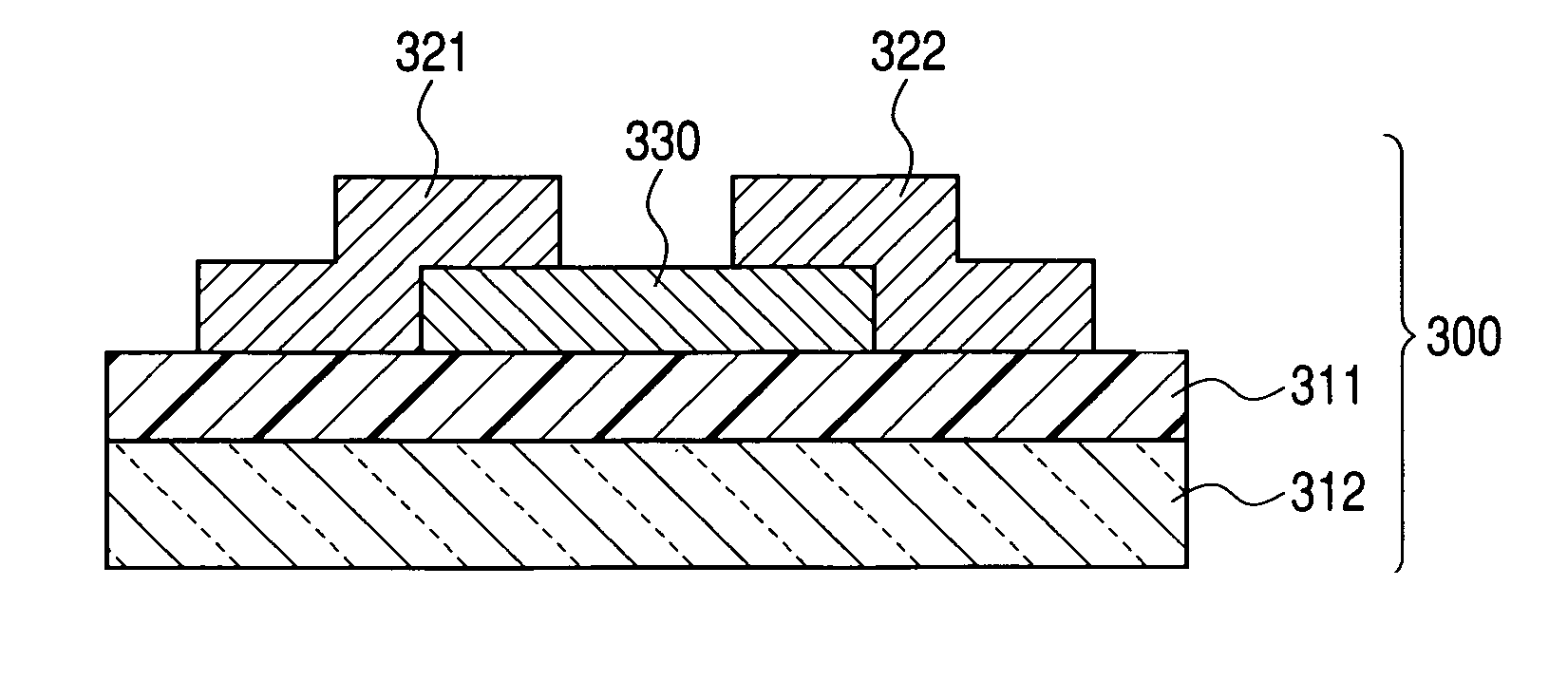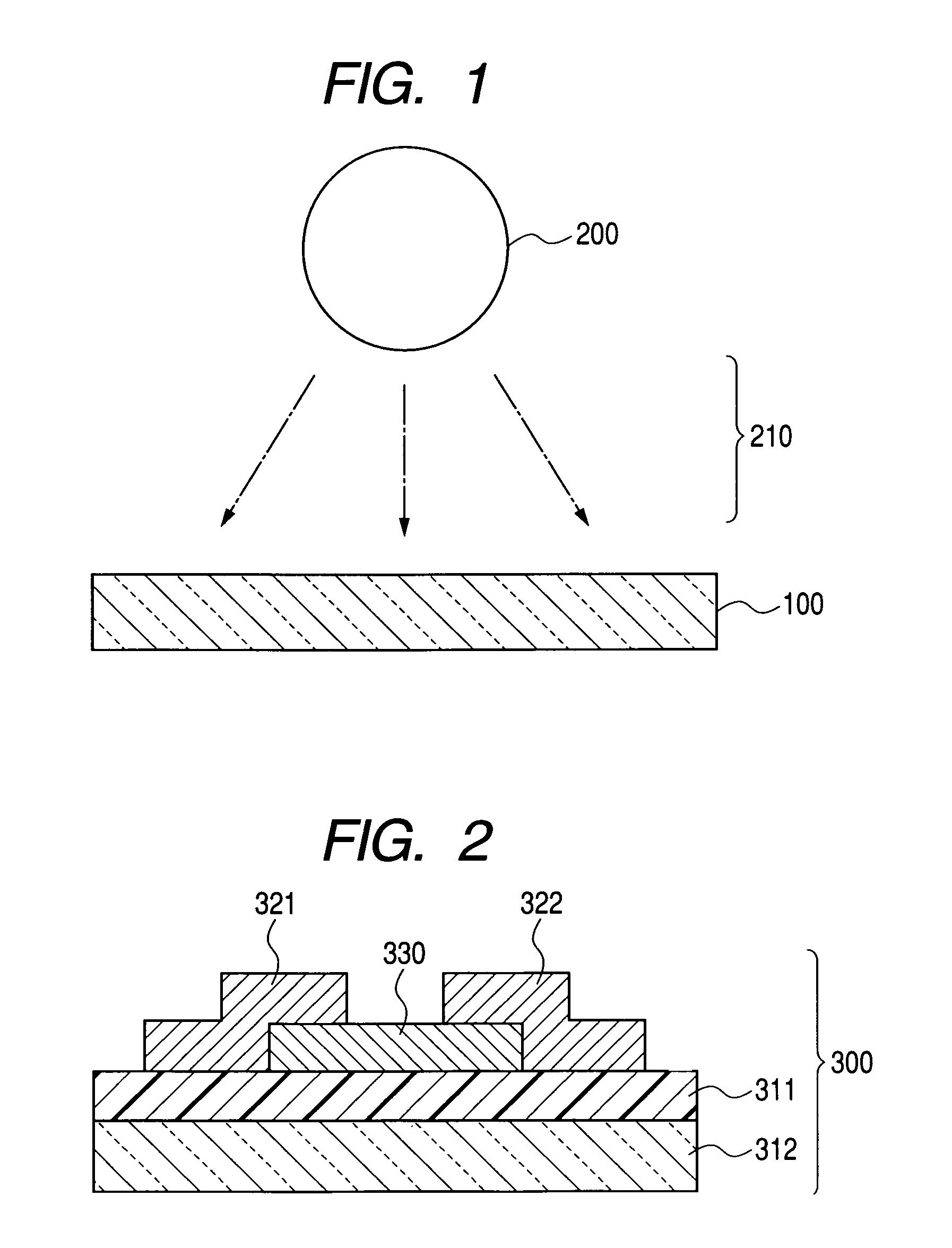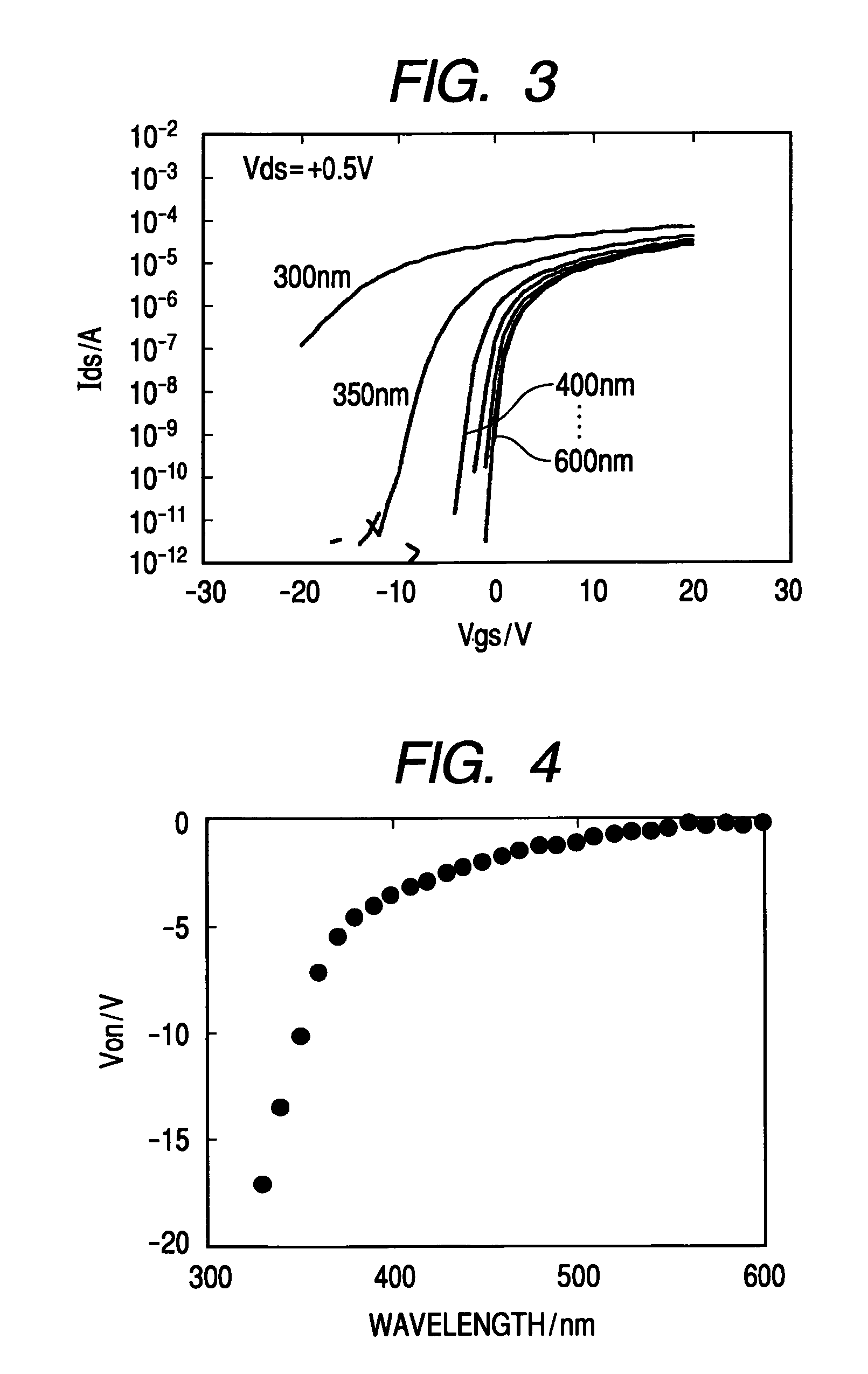Method of treating semiconductor element
a technology of semiconductor elements and threshold voltages, applied in the direction of basic electric elements, semiconductor devices, electrical equipment, etc., can solve the problems of small influence of threshold voltage change and behavior problems, and achieve the effect of making the influence of threshold voltage relatively small
- Summary
- Abstract
- Description
- Claims
- Application Information
AI Technical Summary
Benefits of technology
Problems solved by technology
Method used
Image
Examples
examples
[0080]Now, examples of the present invention will be described. The present invention is not to be limited by the following examples.
first example
[0081]In the present example, a TFT was fabricated first, and a treatment according to the exemplary embodiment of the present invention was applied on the TFT, upon which condition possible influence of light irradiation on the TFT was considered.
(Fabrication of Amorphous IGZO film)
[0082]To begin with, an amorphous IGZO film being a semiconductor film was manufactured to evaluate physicality of the film.
[0083]As a film-forming substrate, a glass substrate (#1737, Corning Incorporated) having been degreased was prepared. As a target material, a polycrystalline sintered compact (with a diameter of 98 mm, a thickness of 5 mm, and an electrical conductance of 0.25 S·cm−1) with an InGaO3 (ZnO) composition was used. A total pressure inside a deposition chamber at film-forming was rendered 0.5 Pa by an oxygen-argon mixed gas containing 5 volume percent of oxygen. A distance between the target and the film-forming substrate was 75 mm. Film-forming was performed with a supply power of RF 20...
second example
[0102]In the present example, a TFT was fabricated first, and a treatment according to the exemplary embodiment of the present invention was applied on the TFT, upon which condition evaluation was carried out.
[0103]To begin with, an amorphous IGZO semiconductor was formed on an n+-silicon wafer with a thermally-oxidized silicon film (100 nm thick) to a thickness of 20 nm under the same conditions as in the case of the first example. An absorption edge wavelength of such amorphous IGZO semiconductor was estimated as follows. A phase difference and an amplitude ratio with respect to reflective polarized lights p and s were derived by ultraviolet-visible spectroscopic ellipsometry. Furthermore, fundamental (inter-band-edge) absorption and tail (subband) absorption were assumed as Tauc-Lorentz type absorption and Gaussian type absorption, respectively, on the basis of which a fitting analysis of the extinction coefficient and the refractive index was performed to meet the Kramers-Kronig...
PUM
 Login to View More
Login to View More Abstract
Description
Claims
Application Information
 Login to View More
Login to View More - R&D
- Intellectual Property
- Life Sciences
- Materials
- Tech Scout
- Unparalleled Data Quality
- Higher Quality Content
- 60% Fewer Hallucinations
Browse by: Latest US Patents, China's latest patents, Technical Efficacy Thesaurus, Application Domain, Technology Topic, Popular Technical Reports.
© 2025 PatSnap. All rights reserved.Legal|Privacy policy|Modern Slavery Act Transparency Statement|Sitemap|About US| Contact US: help@patsnap.com



